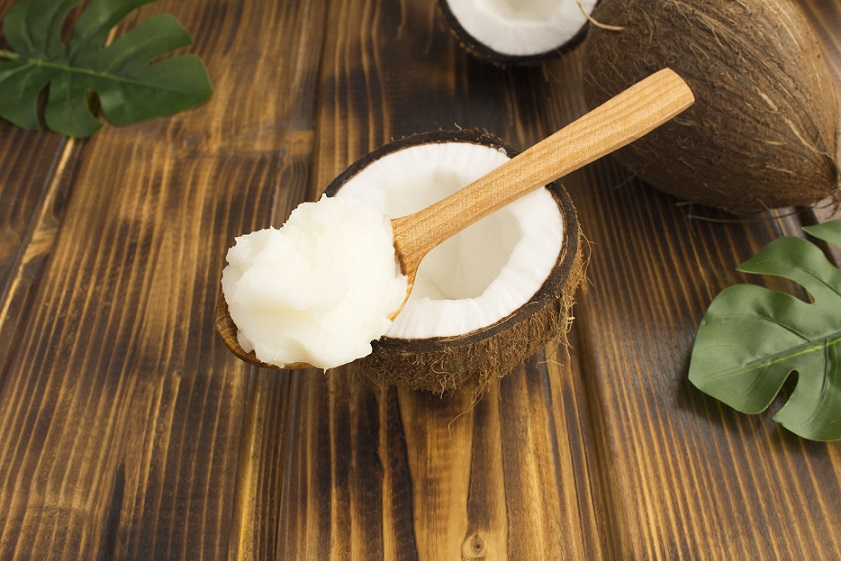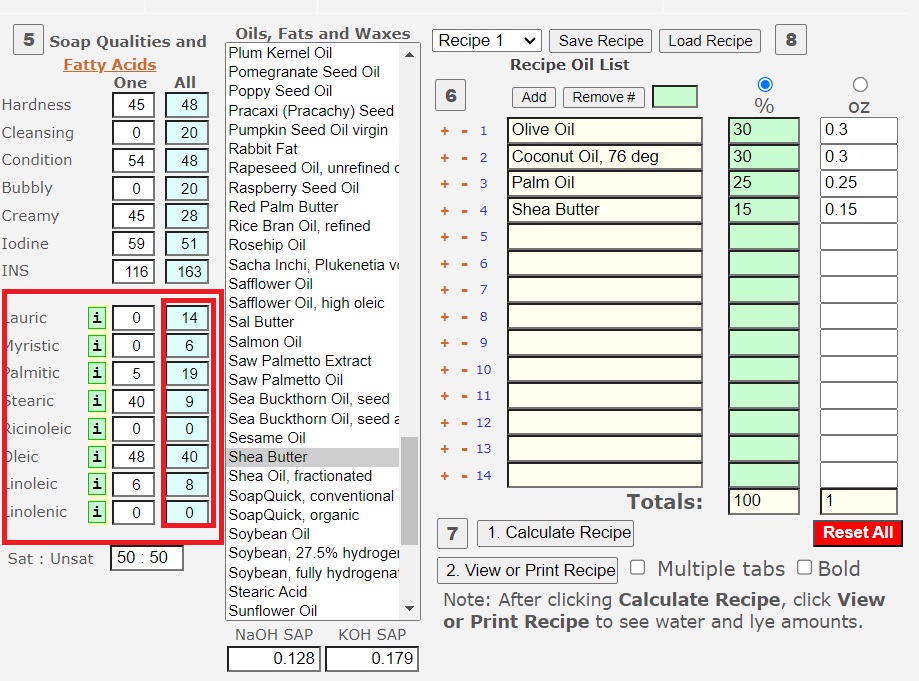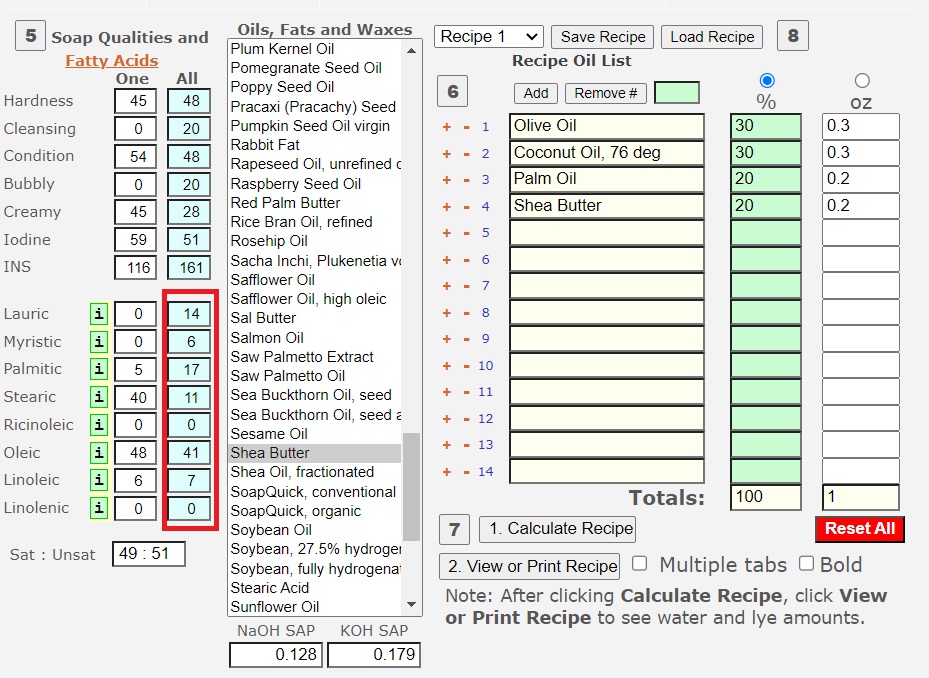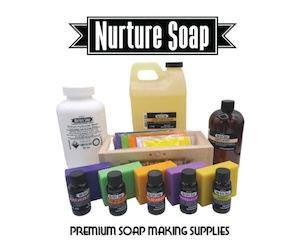Soap Base Oils!
Now that we’ve been making soap for a few years now, it’s crazy to think that when we started, understanding our soap base oils and their properties was an after-thought.
It wasn’t an after-thought because of anything we did, it was more about the information we found, when learning to make cold process soap from scratch.
Don’t get me wrong, their are some big players in the soap making game, from suppliers, to manufacturers, to mom & pop stores that really know what they’re doing. There is also some really great information sources to learn the process and to develop your own formula + branding opportunities. However, when we started we don’t remember ever finding information that pushed the issues of learning your base oils foundations, like what makes them what they are!
What makes a “hard” oil, hard. What makes a “soft” oil, soft? How about what makes a butter more nourishing? What makes an oil more cleansing?
There is bountiful amounts of information on making cold process soaps, from understanding trace, gel phase, colorants, superfatting, “best” combination of oils/butters, “easiest” to work with oils and butters, and so on. However, finding information about what makes up these oils, the science behind why we pick specific oils for our recipes, we were naïve to.
It’s important to note, we are not chemist. Some people may be saying to themselves, “duh”, it largely has to do with their fatty acid make-up. Truth is, we really didn’t think about this when we started!
It was more of a feel thing. For example, we would read about using more “hard” oils and using more “soft” oils to get to what we thought was the perfect bar of soap. Oftentimes, it was based off of others recipes that we tweaked, rather then looking at it from the “ground-up” and asking ourselves, the “why” question.
Much of our answers came when we really started thinking about what we wanted our soaps to be.
- Did we want our soaps to stand out from a moisturizing perspective, a cleansing perspective, etc?
- Did we want our soaps to be more on the “soft” side, or a harder bar of soap?
- Or a combination of the above?
Once we decided that, we moved forward, choosing our oils more carefully and thoughtfully.
One of the things all soapers will run into is cost. If you choose vegan soaps, palm-free soaps, soaps with jojoba oils or babassu oils, or all olive oil soaps, the cost always fluctuates, no matter what!
Some oils and/or butters are just plan expensive (like jojoba, actually a liquid wax, and babassu oil). Once you understand properties, hopefully you can put together recipes that also fit your budget. If you want more luxurious, moisturizing qualities, maybe you can make oil or butter substitutions with ones that have similar properties that are more affordable
In many cases, soaping is a give and take craft. Sometimes you have to find that “happy medium” or that “sweet spot”. Oftentimes, the sweet spot comes back to age old, tried and true recipes that involve your simple, most infamous ingredients. For example, olive oil, coconut oil, and palm oil.

Firstly, These oils work magically together to make a wonderfully balanced soap. Secondly, these ingredients are more affordable then many others, respectively!
One suggestion. Take a very standard recipe, one that you see everyone talk about with popular ingredients and don’t try to reinvent the wheel. Try it out and see what makes it so special. Are there ways you can tweak the recipe to lean slightly more moisturizing, or cleansing, etc.?
Add a conditioning butter, increase or add some castor oil to increase the bubbling action. Play with a simple recipe and go from there. Don’t start with oils and butters you’ve never heard of as your first soap. Sure, maybe you develop a soap with oils and butters no one has combined, and it turns out perfect, but at least get some basic knowledge.
Build a foundation that you can grow your formula from.
Background on the “Make-up” of Oils & Butters in CP Soap!
We are not chemist. Thus, you can certainly find more complex information about each one of the fatty acids we’ll discuss. However, knowing the basics can help you to formulate your own recipe more thoughtfully!
In general…
“Hard oils” help contribute to the “hardness” of a bar of soap. “Hard oils” are substituted with other “hard oils” in a recipe
Simple thought: Many soapers and consumers are not just vegan, they now want palm-free soaps. Palm oil is a GREAT hardener, so in this case you’ll most likely have to find a way to make-up for the loss of the what palm offers. Easier said then done! This is where understanding properties of soap & cost, come into play.
“Soft oils” help contribute to the “softness” of a bar of soap”. These oils are substituted for other “soft oils” in a recipe
“Soft oils” generally contribute to moisturizing and conditioning properties
It’s truly a balancing act. If you take away one oil and or butter, how will you make up for it, without breaking the bank, and by also getting a bar that acts and feels similar.
Saturated Fatty Acids:
Saturated fatty acids (also known as your “hard oils”) have higher amounts of compounds such as lauric, palmitic, myristic and stearic acids.
If you use SoapCalc.net, these fatty acids are all listed on the lower left hand side of the calculator. Furthermore, you can hover over them or click on them, to learn more of the “chemistry” behind them!
Each oil/butter you choose is made-up of a combination of fatty acids. So when you click on an individual oil in SoapCalc.net, you’ll see this
“Sweet Almond Oil”

Notice the red square, this is where you should be looking.
The boxes that are white, represent the percentages of fatty acids that make up sweet almond oil. The fatty acids are located just to the left. SWO is made up of 71% oleic acid, which if you don’t know is an unsaturated fatty acid that helps condition and moisturize, exactly what SWO is used for. It has very little saturated fatty acids (7%). Consequently, it will contribute little to the hardness of your soap.
The boxes that are blue are the percentages of fatty acids that make up the entire recipe (SWO is not included in this recipe at this time, this was just to give you an example of an oil’s fatty acid properties).

This is taking the Olive oil “properties”, Coconut oil “properties”, Palm oil “properties” and the shea butter “properties”, as well as there percentages in the soap, and combining the attributes in the final product.
Watch as we change the Shea butter percentage to 15% from 20%, and the Palm Oil to 20% from 25%.

You’ll notice, there is just a slight change to the palmitic and stearic fatty acids in the “blue boxes”. This changes the percentage of fatty acids in the final product, which in turn effects things like “hardness” and/or “moisturizing” properties. In this case there was little effect!
Changing other percentages, especially if we were to decrease a soft oils and increase a hard, you would most likely see more large scale changes.
Let’s now discuss the basics of these saturated fatty acids!
Lauric Acid:
Lauric acid is great in soap making. This fatty acid adds to the hardness, cleansing properties, as well as fluffy lather.
What do you know! Lauric acid is found in coconut oil, babassu oil and palm kernal oil. In fact, it comprises about 50% of the fatty acid content in coconut milk and palm oil.
Keep in mind, to much lauric acid, like using very high percentages of coconut milk, can be drying to the skin, as it strips natural oils away as it cleanse’s. We can sometimes overcome the drying effects of coconut milk by increase the superfat or by adding other oils/butters (and fatty acids), responsible for moisturizing properties.
Myristic Acid:
Like lauric, this is another saturated fatty acid. It is also found in palm oil, coconut oil, and also many animal fats. It adds to the hardness, cleansing and lathering soap properties. Coconut oil is about 19% myristic acid and babassu oil is roughly 20%, a good reason why these 2 oils are used fairly interchangeable.
Palmitic Acid:
You probably could have guessed, palm oil is largely made up of palmitic acid, at about 45%. Another saturated fatty acid that adds to the hardness and lather of your soap. Commonly used soaping ingredients such as lard, tallow, cocoa butter, & avocado butter are also high in this fatty acid. In fact, both cocoa butter and tallow (beef) are made up of roughly 28% palmitic acid.
Stearic Acid:
The last of our saturated fatty acids that we’ll discuss is stearic acid. It contributes to hardness and a stable lather. Kokum butter (56%), Cocoa butter (33%), tallow (beef, 22%), shea butter (40%), and mango seed butter (42%), are all high in stearic acid. Oftentimes with a palm-free recipe, you’ll find slightly higher concentration of butters that contain steric acid, as it helps to compensate for hardness lost from eliminating palm oil.
Unsaturated Fatty Acids:
Ricin oleic Acid:
The first of the unsaturated fatty acids we’ll discuss. This in particular, is a unsaturated omega-9 fatty acid. It is largely associated with castor oil as it is found in seed oil from the castor plant. This fatty acid is largely responsible for the great stable and bubbly lather in soaps. While bubbly lather is great, to much can actually cause your bars to become to soft and/or tacky feeling. We like to use castor oil around 5-7%.
Oleic Acid:
The second unsaturated fatty acid we’ll discuss on our “fatty acid” adventure is oleic acid. Oleic acid occurs naturally in many animal and vegetable fats and oils. It is a monounsaturated omega-9 fatty acid. It can be found in abundance in olive oil, pecan oil, canola oil, grapeseed oil and sunflower oil. This fatty acid helps to leave your skin feeling well conditioned and moisturized.
Linoleic Acid:
This polyunsaturated fatty acid helps to leave a silkiness to the lather, and moisturizes/conditions the skin. It is found in high amounts in safflower oil, sunflower oils, hemp oil, wheat germ oil, and rice bran oil.
Linolenic Acid:
We’ve come to the end of our fatty acid journey with linolenic acid. A polyunsaturated fatty acid, again that contributes to conditioning and moisturization of the skin. Typically you’ll find this acid in low amounts in your total soap formula. It’s high in oils like black currant seed oil, cranberry seed oil, hemp oil, flax oils and pomegranate oil.
Final Thoughts On Soap Base Oils!
I know, Wow!
That was long and grueling wasn’t it? The point here is to not over-complicate things. The point here is to build a foundation of knowledge, that with it, you can make a soap that works for you.
Take a simple formula, like the one we pictured in the middle of this post. Make substitutions, play around and see how certain ingredients change the final product, adding hardness, cleansing, conditioning, and bubbly properties.
Like always, feel free to share your thoughts in the comments section. Something you share may help someone else in need of an answer. We don’t have all the answers, no one does.
Soaping is about following guidelines and being safe. There is no universal perfect soap, but there may be a perfect soap to you!
Resources:
- https://en.wikipedia.org/wiki/Ricinoleic_acid
- https://en.wikipedia.org/wiki/Lauric_acid
- https://en.wikipedia.org/wiki/Oleic_acid



